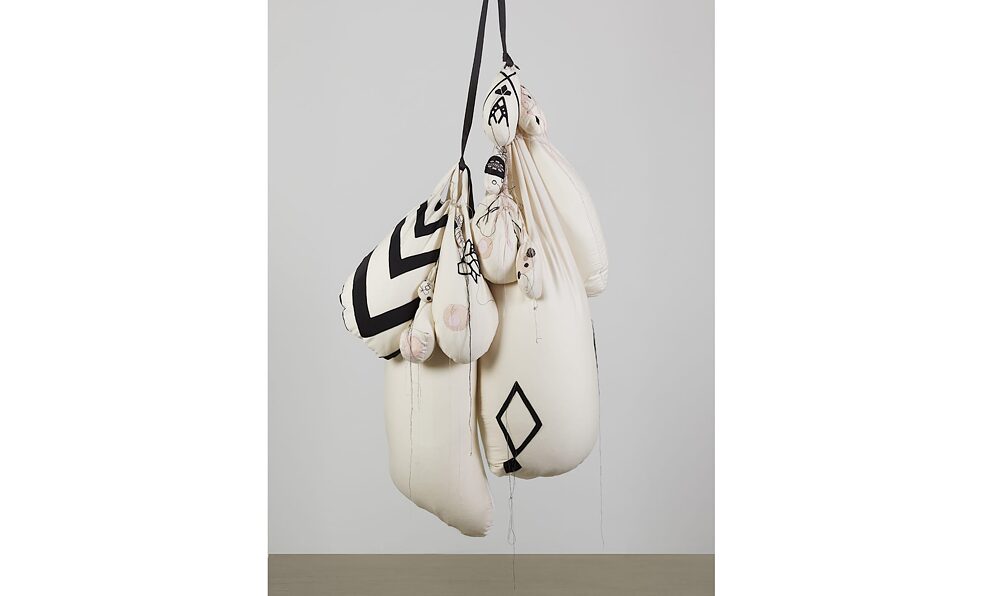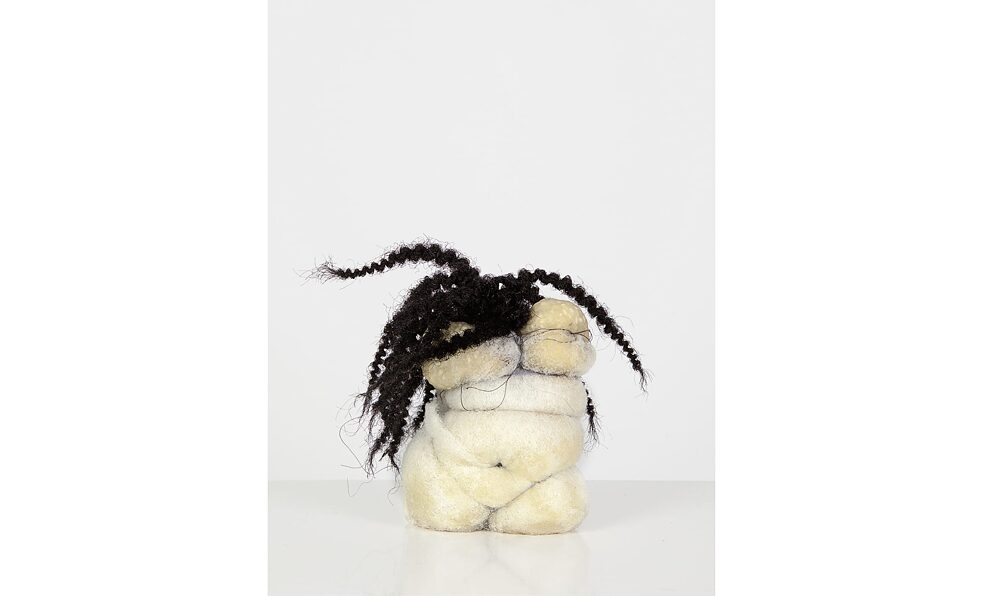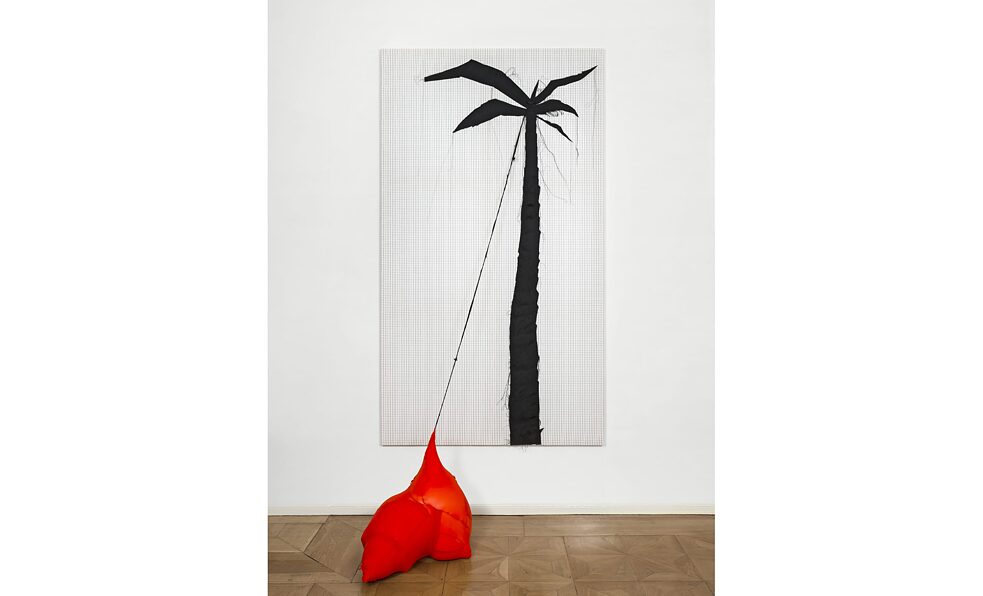Manifesta 13 in Marseille
“The pandemic made me think a lot about death”
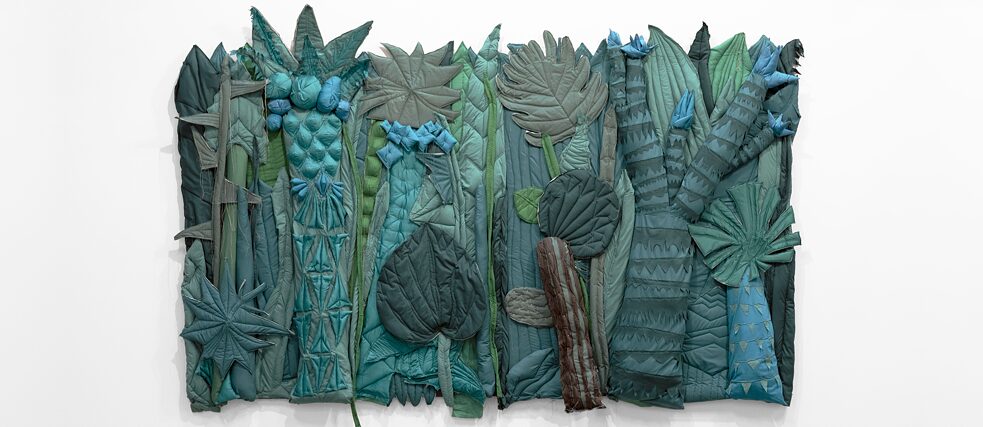
This autumn, Manifesta 13 will take place in Marseille under difficult conditions. The Goethe-Institut Marseille accompanies the biennial for contemporary art with residencies and exhibition formats. In our interview, Hoda Tawakol, participant in the “Résidences Croisées”, talks about port cities and the influence of her “three mothers” on her art.
From your perspective as a Hamburg resident, what distinguishes Marseille and what contrasts do you expect there compared to the German art scene?
Hoda Tawakol: Both Hamburg and Marseille are port cities. For me they stand for openness and cultural exchange. Furthermore, these two cities form a north-south axis between Germany and France, the two countries in which I have lived the longest and which are important to me. In a way, this axis stands for my roots in the north and my longing for the south.
I’ve lived in Hamburg for 23 years and love this city. As much as I now feel at home in Hamburg, I miss the warmth and the Mediterranean. I feel a longing for Marseille, even though I don’t know the city.
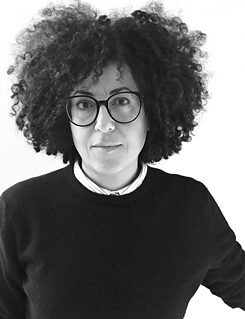 The Egyptian artist Hoda Tawakol.
| Photo (detail): © Hoda Tawakol
I moved from Germany to France when I was five years old. I lived mainly in Paris and spent 18 years in France. In all those years I never visited Marseille once. I only know Marseille from my imagination or from stories, sometimes clichéd. I imagine a big city that is warmer, more sensual and softer than Paris due to its proximity to the Mediterranean Sea. And precisely because I don’t know Marseille, I was very taken with the idea of being able to spend several weeks there. Discovering a new city and its art scene is a gift. I would like to thank everyone involved who made this residency possible. I’m really looking forward to Marseille, its artists, institutions, galleries and off-spaces.
The Egyptian artist Hoda Tawakol.
| Photo (detail): © Hoda Tawakol
I moved from Germany to France when I was five years old. I lived mainly in Paris and spent 18 years in France. In all those years I never visited Marseille once. I only know Marseille from my imagination or from stories, sometimes clichéd. I imagine a big city that is warmer, more sensual and softer than Paris due to its proximity to the Mediterranean Sea. And precisely because I don’t know Marseille, I was very taken with the idea of being able to spend several weeks there. Discovering a new city and its art scene is a gift. I would like to thank everyone involved who made this residency possible. I’m really looking forward to Marseille, its artists, institutions, galleries and off-spaces.
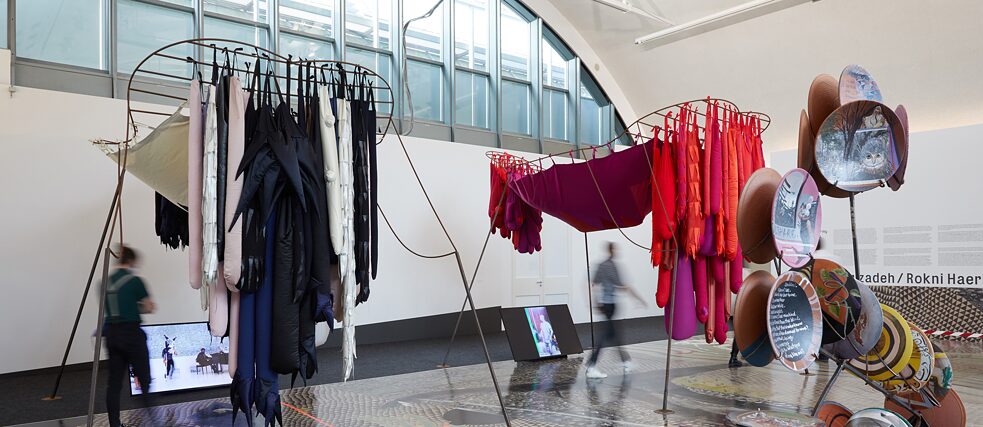 Ramin Haerizadeh, Rokni Haerizadeh, Hesam Rahmanian, Hoda Tawakol, “What if We Build Our Own Country, Drinking the Donkey’s Milk, Rather that the Wolf’s?” (2020). | Photo (detail): © Schirn Kunsthalle Frankfurt, Marc Krause
Ramin Haerizadeh, Rokni Haerizadeh, Hesam Rahmanian, Hoda Tawakol, “What if We Build Our Own Country, Drinking the Donkey’s Milk, Rather that the Wolf’s?” (2020). | Photo (detail): © Schirn Kunsthalle Frankfurt, Marc Krause
Hoda Tawakol: The pandemic has affected both my sense of time and the content of my work. At the beginning of the pandemic there was uncertainty, a hectic rush and frustration. When the lockdown in Germany became apparent, I quickly stocked up on materials, mainly textiles, in order to be able to continue working. I had to make two large textile sculptures for an exhibition in the Schirn Kunsthalle by mid-April. When the lockdown started, all the projects that were running at full speed were halted or even cancelled for the time being. I had to take a three-week break. From that moment on, time slowed down for me.
The pandemic also made me think a lot about death, a topic that I have been researching over the past few years in relation to ancient Egyptian rituals. I was particularly interested in mummification and in the belief in eternal life. Many people died because of the pandemic, and the pictures from Italy of the lorries in columns driving off the bodies to the cemeteries will remain etched in my memory.
In addition, the pandemic has meant massive existential fears and menacing financial bottlenecks for many parts of society. The lowest point for me was in mid-April. My drive to continue working without concrete projects or prospects dwindled. At that time, my doubts grew bigger. At what felt like my lowest point, I received an invitation from an artist and publisher friend from Beirut to take part in an artists’ book project. Artists from all over the world were invited to report on their quarantine and isolation in the form of an artist book. It felt like a resuscitation to me. A week later I received the invitation for the residency in Marseille. That was my second boost of life. Yet another week later I received the invitation to take part in an exhibition in a sculpture park in Hamburg.
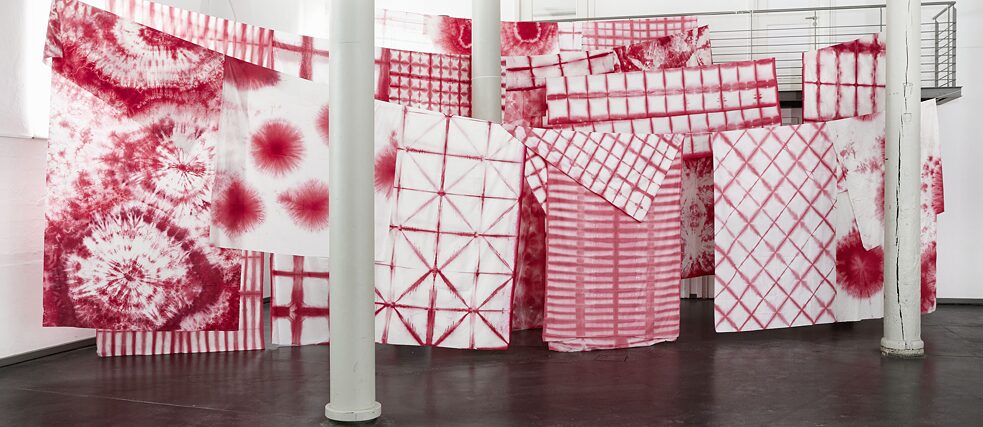 Hoda Tawakol, “Immaculate #20” (2019, fabric, dye, rope, 370 x 745 x 550 cm). | Photo (detail): © Robert Schlossnickel
Hoda Tawakol, “Immaculate #20” (2019, fabric, dye, rope, 370 x 745 x 550 cm). | Photo (detail): © Robert Schlossnickel
Hoda Tawakol: My personal biography certainly plays a major role in my artistic practice. I was raised by “three mothers”: my grandmother, my birth mother and my nanny. My father didn’t play a role in my life from very early on. My environment was very feminine. All three women had ample bodies. The forms, the abundance and the voluptuousness that are connected with the physical can be found in my work. These three women were very different in their natures, their roles and their social integration. I unconsciously observed, studied and internalised each of them. I think that the different facets of the feminine come from my childhood and flow into my work. In addition, of course, feminist theories also play an important role in my life in general and in my work. For me, feminism is a means of freeing women from gender-specific constraints, but also a means of celebrating being a woman. Both aspects are present in my work.
